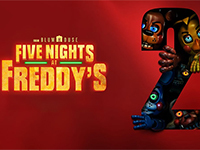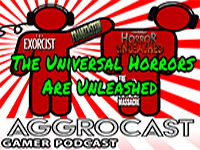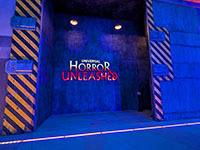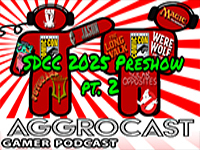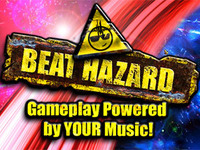
Big on gameplay, Beat Hazard makes no pretense regarding the presence of a story. Rather, it absorbs the drama from the song and builds your world from that palette. The system builds a song’s level off of “musical events” found in each track. Minor changes in tempo or intensity may produce one wave of enemies or boulders while a major change could involve multiple waves or multiple bosses. This ensures each song is unique and consistent per play-through. Crash and burn on a song and your next play-through is identical.
As the protagonist, you are concerned with just more than where you are in space and how powered up your weapons are. Yes, weapon powerups are essential, but much of your success is generated through how loud (volume) your music is being played and how intense is your song getting. Volume powerups give your weapons the added boost needed, especially if a song is hitting a soft spot. Even with your weapons’ power maxed out, a lull in the song drops your rate of fire to a spittle – something you definitely want to avoid.
Enemies vary from little ships with no weapons trying to kamikaze you to the large boss ships with cannons firing everything from laser beams to you-seeking missiles. Throw Asteroid-like collections of space junk in the mix for an obstacle-filled ballet you will have trouble putting down.
Also keeping you from your Quit command are leaderboards, ranks and (for Steam users) achievements. Your score is heavily impacted by your multiplier – earned by picking up enemy drops, surviving for a time (survival) or by not shooting (dare devil). As your total score earned increases, so does your rank in the game. Achieving certain ranks gives you boosts to your survival and dare devil multipliers, which makes for a tricky balance of shooting (get a +1 multiplier drop from an enemy) versus dodging (a 6-second wait for a dare devil can be up to +5).
Beat Hazard is intense. The game’s beauty and ferocity are driven from the visual style of the game. The disclaimer warning against epileptic seizures at the beginning of the game is no “cover our ass” dribble. Flashing lights, exploding enemies, power ups, gunfire – both yours and your enemies’ – and field debris all skitter across your vision during the experience. There are literally times I could not find my own ship on the screen as I attempted to wade through the visual onslaught. This is both a positive and a negative for the game as some of the moments of ocular chaos feel satisfying while others make the difficulty feel cheap with some unpreventable deaths in the rubble.
Bottom line, Beat Hazard is a great space shooter with a musical hook. This game hits all the good points in the intense “less than $10 downloadable game” market: it’s got quick bursts of fun, it’s addictive, it’s not cognitively demanding and it’s inexpensive. The visual intensity may be a turn-off for some, but if you’re looking for a solid space shooter, you need look no further. You can find Beat Hazard on Steam, GamersGate and Direct2Drive in the $9.99 range or on XBox Live Indie Games for 400 Microsoft Points.
** I purchased this game myself on Steam and received no considerations. I played approximately 10 hours and accumulated 18/25 achievements.











